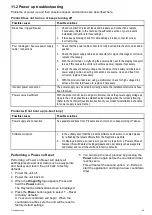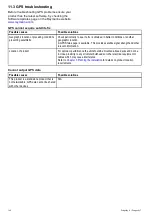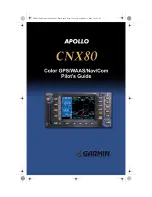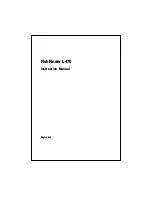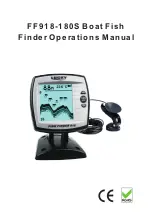
Units set-up
You can specify your preference for the units of measurement that will be used in all applications.
Menu item
Description
Options
Distance Units
The units of measure that will be used in all
applications for the display of all values related
to distance.
• Nautical Miles
• NM & m (Nautical miles and meters)
• Statute Miles
• Kilometers
Speed Units
The units of measure that will be used in all
applications for the display of all values related
to speed.
• Knots
• MPH (Miles Per Hour)
• KPH (Kilometers Per Hour)
Depth Units
The units of measure that will be used in all
applications for the display of all values related
to depth.
• Feet
• Meters
• Fathoms
Temperature Units
The units of measure that will be used in all
applications for the display of all values related
to temperature.
• Fahrenheit
• Celsius
GPS Set-up menu
The options available from the GPS set-up menu are
shown below.
Menu item
Description
Options
View Satellite
Status
Displays the GPS
status page.
COG/SOG
Filter:
Refer to the
section for details.
• Low
• Medium (default)
• High
Restart GPS
Selecting
Restart
GPS
will reboot the
internal GPS.
GPS Status
Products with an internal GPS receiver or GNSS
(GPS/GLONASS) receiver can use the GPS status
page to view the status of the available satellites that
are compatible with your receiver.
The satellite constellations are used to position your
boat in the Chart application. You can set up your
receiver and check its status from the
GPS Set-up
menu. For each satellite, the screen provides the
following information:
1. Sky view
2. Satellite status
3. Position and ix information
Sky view
Sky view is a visual representation that shows
the position of navigation satellites and their type.
Satellite types are:
•
Circle
— A circle identiies a satellite from the
GPS constellation.
•
Square
— A square identiies an (SBAS)
differential satellite.
•
Diamond
— A diamond identiies a satellite from
the GLONASS constellation.
Satellite status area
The Satellite status area displays the following
information about each satellite:
•
Type
— Identiies which constellation the satellite
belongs to.
•
ID
— Displays the satellites identiication number.
•
CNO
(Carrier-to-noise ratio) — Displays the signal
strength of each satellite shown in the Sky view:
– Grey = searching for satellite
– Green = satellite in use
– Orange = tracking satellite
•
Azimuth and Elevation
— Provides the angle of
elevation and azimuth between the location of the
receiver and the satellite.
Position and ix information
The following positional and ix information is
provided:
•
Horizontal Dilution of Precision (HDOP)
— HDOP is a measure of satellite navigation
accuracy, calculated from a number of factors
including satellite geometry, system errors in
the data transmission and system errors in the
receiver. A higher igure signiies a greater
positional error. A typical receiver has an accuracy
of between 5 and 15 m. As an example, assuming
a receiver error of 5 m, an HDOP of 2 would
Tools & Settings
85
Summary of Contents for Dragonfly 6
Page 2: ......
Page 4: ......
Page 24: ...24 Dragonly 6 Dragonly 7...
Page 82: ...82 Dragonly 6 Dragonly 7...
Page 96: ...96 Dragonly 6 Dragonly 7...
Page 104: ...104 Dragonly 6 Dragonly 7...
Page 108: ...108 Dragonly 6 Dragonly 7...
Page 112: ...112 Dragonly 6 Dragonly 7...
Page 115: ......
Page 116: ......





























